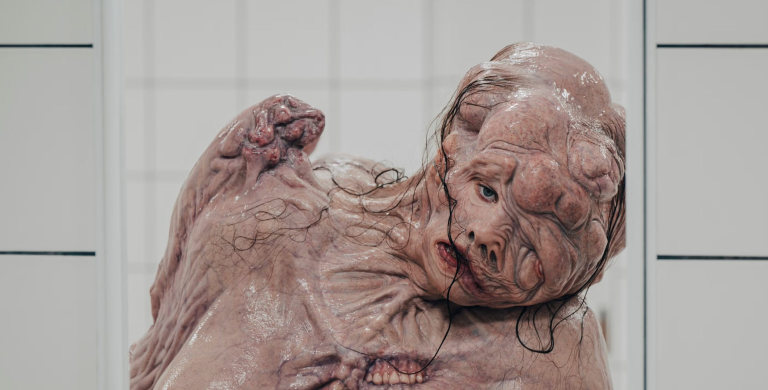
Obsessive-Compulsive Disorder: The Mind On Replay
Those with OCD may be very well aware that their compulsions and obsessions are irrational, but that does not make them less prone to engaging in rituals to ward off the obsessive thoughts and impulses they may have.
Obsessive-Compulsive Disorder is a chronic condition in which an individual is driven by obsessions and compulsive behavior arising from these obsessions. The symptoms of OCD include time-consuming rituals related to intrusive, unwanted, reoccurring thoughts which disrupt a person’s daily life and cause major distress.
It’s common for one to joke, “It’s my OCD!” or “I just have OCD about these sorts of things,” but the reality of Obsessive-Compulsive Disorder is no laughing matter. OCD is a serious disorder and chronic condition that affects 1.2% of people in the U.S. every year and it’s more than just being occasionally obsessive or anxious about something.
Individuals with OCD have reoccurring unwanted, intrusive thoughts, impulses or obsessions that lead them to engage in compulsive, repetitive behavior. The majority of people diagnosed with OCD have both obsessions and compulsions, although a small minority do have only one of the two. These behaviors and rituals are time-consuming, disrupt basic functioning, interfere with one’s daily life and cause major distress to the individual. Rituals in those diagnosed with OCD usually take up at least one hour or more per day.

Those with OCD may be very well aware that their compulsions and obsessions are irrational, but that does not make them less prone to engaging in rituals to ward off the obsessive thoughts and impulses they may have.
The Symptoms of OCD
Common obsessions in individuals with OCD include but are certainly not limited to:
Cleanliness and fear of contamination.
A person with this type of obsession may demonstrate an excessive focus on keeping themselves “clean” by washing their hands compulsively, avoiding physical contact with people, or attempting to safeguard themselves against the threat of contamination in other ways.
Order and symmetry.
Individuals obsessed with order and symmetry might “need” certain items to be in a certain place, to demonstrate symmetry or be organized by a specific theme. While people without OCD can do this as well, in individuals with OCD this obsession becomes time-consuming and ritualistic.
Fear-based thoughts.
Individuals with an obsession surrounding fear-based thoughts struggle with anxiety about thoughts about the future or dreaded events. They may also be obsessed with taboo thoughts they’re not supposed to have (such as those dealing with sex or violence) or regarding any harm that might befall them or someone they love.
Common compulsions arising from obsessions can include:
Repetition of words and phrases to prevent what they fear from coming to life.
Whatever a person with OCD fears, they may try to prevent it from happening by repeating words, phrases or numbers as a way to prevent these fears from manifesting.
EXAMPLE
Malcolm had a reputation for being studious. He would study late hours into the night and his friends would always crack jokes about what a nerd he was. But they didn’t know that a lot of the time he spent studying were actually spent repeating words and numbers in his head, over and over again. Perfection. 100. Aced it. 100. Extraordinary. 100. Perfection. 100. Aced it. 100. Extraordinary. 100.
He repeated this pattern of words and numbers until he felt a small sense of relief that he would ace his next exam. But the fear would always rise up in his chest again, and he would find himself having to start writing them down just to reassure himself that he was as brilliant as he thought he was.
Unbeknownst to Malcolm, childhood bullying and a verbally abusive father had taken a toll on him. They had affected his levels of confidence about his intelligence. Part of his obsession with these words and numbers had a lot to do with the disparaging remarks he had heard as a bully victim. They were his way of reclaiming his power as an adult and as a way to control his own self-perception. These early childhood experiences were inevitably part of the pattern of his compulsions.

OCD Counting rituals.
Individuals who engage in counting rituals may feel compelled to count certain items, count down to a certain number while performing an action or mentally count as a way to self-soothe. An excellent example of counting rituals is illustrated in the book Kissing Doorknobs by Terry Spencer Hesser, which tells the story of an eleven-year-old girl named Tara who is afflicted with OCD. In order to ward off the fear of “breaking her mother’s back,” Tara has to jump over and count each crack in the pavement as she walks – all 495 of them:
“Step on a crack, break your mother’s back! The first time I heard that stupid rhyme was when I was eleven years old and still in possession of my own thoughts…I heard it while I was brushing my teeth, Step on a crack, break your mother’s back! eating dinner, Step on a crack, break your mother’s back! doing my homework, Step on a crack, break your mother’s back! having a conversation, Step on a crack, break your mother’s back! and falling asleep.
So the last thing in the world I wanted was to think the same thought over and over and over again, especially a thought as uninteresting and a rhyme as stupid as Step on a crack, break your mother’s back. Not that it mattered what I wanted to do or think about. Because not long after I heard that moronic rhyme for the first time, I suddenly couldn’t take my eyes off the sidewalk long enough to cross streets safely.
Unexplainably, and in a state of confused foreboding, I was examining every square of pavement between my house and my school. And I was counting the cracks. Lots of them. At approximately 60 paved squares a block, there were roughly 480 opportunities to break my poor, sweet, understanding, gentle, funny mother’s back. Actually, there were exactly 495 opportunities to break her back. And the idea of life without her, or of her lying in traction for the rest of her life, scared me so much that my upper lip would sweat whenever I thought of it-which I did with alarming frequency.”
OCD Checking rituals.
These rituals include obsessively checking to ensure that that things are exactly where they left them. For example, individuals afflicted with compulsive checking rituals may check numerous times to ensure that their door is locked every time they lock it, confirm that their stove is turned off, and might even rush back home several times to confirm that everything is still safe.

EXAMPLE
Maria lived a quiet life in the suburbs in a relatively safe neighborhood. Yet she couldn’t shake the fear that her house would get robbed or burn down if she didn’t constantly “check” to make sure the door was locked, the stove was turned off, any candles were blown out and the all electronic appliances unplugged. Her friends thought she was just being silly when she would run back home in the middle of an event just to make sure everything was still turned off, but her severe anxiety was overwhelming.
She also had a habit of flickering her lights on and off twenty times each time she left her house, even if she was coming right back; these rituals granted her a sense of temporary ease and safety, but took up a lot of her time and caused significant distress when she wasn’t home. She found she wasn’t able to enjoy herself when she was constantly worrying about whether she had really blown out those candles or whether she had really turned everything potentially dangerous off.
OCD Cleaning rituals.
These rituals are designed to defend against fears related to germs or contamination. It could include anything from excessively scrubbing one’s apartment, wearing gloves when on public transportation, washing hands until they’re raw, or even avoiding physical touch such as handshakes or hugs in fear of being contaminated with germs.

EXAMPLE
Lydia couldn’t go anywhere in public without wearing gloves. If she touched anything with her bare hands by accident, she would immediately flinch and be consumed with thoughts of germs contaminating her. She carried around hand sanitizer everywhere she went, but it was not enough to alleviate her fear of contamination. If she did make contact with anything or anyone, she would have to rush back home mid-commute to scrub her hands clean until they were raw. She did not trust public restrooms.
Throughout the course of therapy, Lydia realized that this compulsion was also tied to her fears of premature death and made her think of her grandmother who died in her sleep when she was just a young child. She remembered trying to shake her grandmother awake, attempting to use her small hands to tug at her arms, only to feel how cold her grandmother’s body was. In her mind, the idea of dying was inextricably tied to the idea of human touch and being contaminated.
“Not-Just Right” Experiences in OCD
According to research, there are also some individuals with OCD who engage in compulsive rituals because they have the sensation of something being “incomplete” also known as “not-just right experiences” or NJREs. These repetitive behaviors are often preceded by the need to achieve “a just right sensation.”
These types of sensations are more commonly associated with OCD rituals related to symmetery, ordering and arranging items. Although they may not cause as much guilt as the aforementioned OCD subtypes, they may still cause a feeling of not “doing enough.”
The DSM-5 Criteria for Obsessive-Compulsive Disorder
A. The presence of either obsessions or compulsions – or both:
Obsessions are defined by the following:
- Recurrent and persistent thoughts, urges, or images that are experienced, at some time during the disturbance, as intrusive and unwanted, and that in most individuals cause marked anxiety or distress.
- The individual attempts to ignore or suppress such thoughts, urges, or images, or to neutralize them with some other thought or action.
Compulsions are defined by the following:
- Repetitive behaviors (such as hand washing) or mental acts (such as counting) that the individual feels driven to perform in response to an obsession or according to rules that must be applied rigidly.
- The behaviors or mental acts are aimed at preventing or reducing anxiety or distress, or preventing some dreaded event or situation; however, these behaviors or mental acts are not connected in a realistic way with what they are designed to neutralize or prevent, or are clearly excessive.
Additional criteria include the following:
B. The obsessions or compulsions are time-consuming or cause clinically significant distress or impairment in social, occupational, or other important areas of functioning.
C. The obsessive-compulsive symptoms are not attributable to the physiological effects of a substance or another medical condition.
D. The disturbance is not better explained by the symptoms of another mental disorder (e.g., excessive worries, as in generalized anxiety disorder; preoccupation with appearance, as in body dysmorphic disorder).
While you may engage in these behaviors in an attempt to ward off the fear and ultimately suppress these thoughts from arising, the suppression of these thoughts and continued engagement in compulsive checking behaviors only increases the frequency of these behaviors and thoughts and continues the cycle.
As a result, individuals with OCD may suffer from guilt from not sufficiently “preventing” feared events or complying with rigid rules in response to obsessions.
Examples of OCD, including guilt inducing OCD obsessions and compulsions, can include the following:
| Obsession | Compulsion |
| Contamination (e.g. fear of germs) | Hand-washing furiously after any perceived contamination even to the point where their hands are bruised or cleaning the house for hours |
| Symmetry or not feeling “just right” | Arranging items in your house for hours in a certain order to have a sensation of “completeness” |
| Fear of harming others or being violent | Checking the stove repetitively to make sure it’s turned off to prevent harm or hiding knives in the house to ensure you cannot harm anyone |
| Intrusive thoughts about having taboo sexual actions | Mentally looping a word or phrase every time to neutralize these thoughts or physically tapping the door a certain number of times to prevent them |
| Fear of committing a sin or committing blasphemy | Saying a particular prayer multiple times to “cancel it out” |
Causes of Obsessive-Compulsive Disorder
The exact causes of Obsessive-Compulsive Disorder are currently unknown. However, a variety of factors are believed to play a role.
Genetic
There does appear to be a genetic component to this disorder, as twin and family studies have shown that those who have first-degree relatives are more at risk for developing the disorder.
Brain Structures
A 2018 meta-analysis of brain scans revealed that in the brains of hundreds of patients with OCD, there was hyperactivation in areas of the brain related to error processing, indicating an excessive amount of responsiveness to errors and a lack of activation in areas of the brain related to inhibitory control and “stop signals.”
Other past research indicates that patients with OCD have a disruption in connectivity between the limbic system and executive/attention network. The limbic system is involved in fear, memory, emotional processing, processing of reward and punishment. The executive/attention network is involved in goal-oriented behavior, error monitoring and detection, regulation of thoughts, emotions and responses.
Systems like the basal ganglia network are implicated in motor control, whereas the default mode network is implicated in intrinsic awareness, craving, withdrawal and rumination. PET scans have also revealed elevated activity in areas of the frontal lobes (involved in decision-making) and the basal ganglia in patients with OCD. The basal ganglia is involved in a variety of functions, including motor control, executive functioning, emotions and behavior.
These studies highlight potential reasons why individuals with OCD can feel stuck in an endless loop of being hyperfocused on their perceived errors (obsessions) which can trigger anxiety due to heightened error responses, while being less able to regulate or put a brake on their subsequent compulsions.
Environment
Stressful life events such as trauma (as we saw with Malcolm’s history of childhood bullying and Lydia’s experience of losing her grandmother) can also trigger this disorder. Individuals with other disorders like tic disorder, anxiety disorders, depression or substance abuse may also be more prone to developing OCD.
Treatments for Obsessive-Compulsive Disorder

It’s important to note that rituals only provide temporary relief to the obsessive-compulsive person, not any sense of long-lasting peace. A professional diagnosis and treatment program is needed in order to alleviate symptoms of OCD in the long-term.
Individuals with Obsessive-Compulsive disorder can benefit from individual psychotherapy along with medications, if applicable. Medications for OCD such as selective serotonin reuptake inhibitors (SSRIS), certain tricyclic antidepressants, antipsychotics or NMDA receptor antagonists may also help in addition to therapeutic treatment. If you have symptoms of OCD, speak with your medical provider to find out what is the best course of treatment for you.
Research has shown that Cognitive-Behavioral Therapy (which focuses on changing negative thoughts and lessening their intensity and the behaviors that come with them) and Exposure and Response Prevention therapy (which exposes the person to their worst fears) have been effective in reducing symptoms.
Exposure and Response Prevention Therapy can help to desensitize the individual to the fears associated with their particular obsessions or compulsions. One of the ways it does this is by gradually allowing the client to confront the absence of their rituals, thereby internalizing the idea that they will still be safe even if they do not engage in them. It also teaches the client healthy coping methods to manage their anxiety so they learn how to survive without resorting to the rituals.
It can be vital to differentiate any OCD-induced guilt from warranted guilt by recognizing that your intrusive thoughts are not who you truly are, nor do they reflect what you desire. Instead, this guilt stems from the fear of events you do not want to happen. Your fears are often focused on harming or sabotaging what you care about, and they do not stem from your authentic desires.
When you notice guilt related to an obsession arise, you may find it helpful to mindfully and compassionately observe it and see it as connected to your obsession and fear, rather than a warranted emotion related to any actual behavior you’ve engaged in or plan to engage in.
Remind yourself that you are not your thoughts, and that your thoughts may not be related to any past or future behaviors. Engaging in compulsive rituals may temporarily buffer distress, but breaking the conditioning between obsessions and compulsions can bring longer-term relief.
If you are suffering from the symptoms of Obsessive-Compulsive disorder and it is causing you major distress, it’s necessary to seek professional support. Only a licensed professional can provide an official diagnosis and guide you back to a sense of safety and well-being with a treatment plan tailored to your unique needs.











